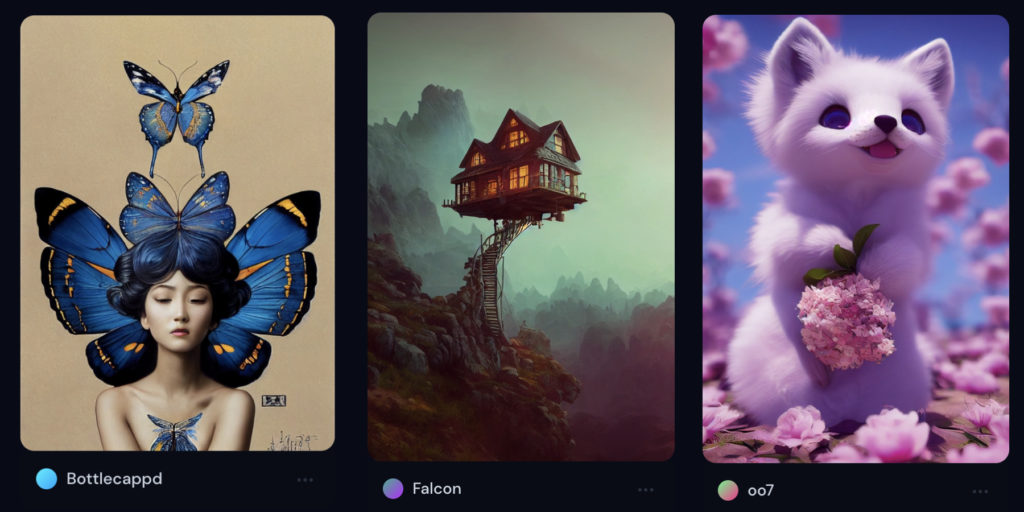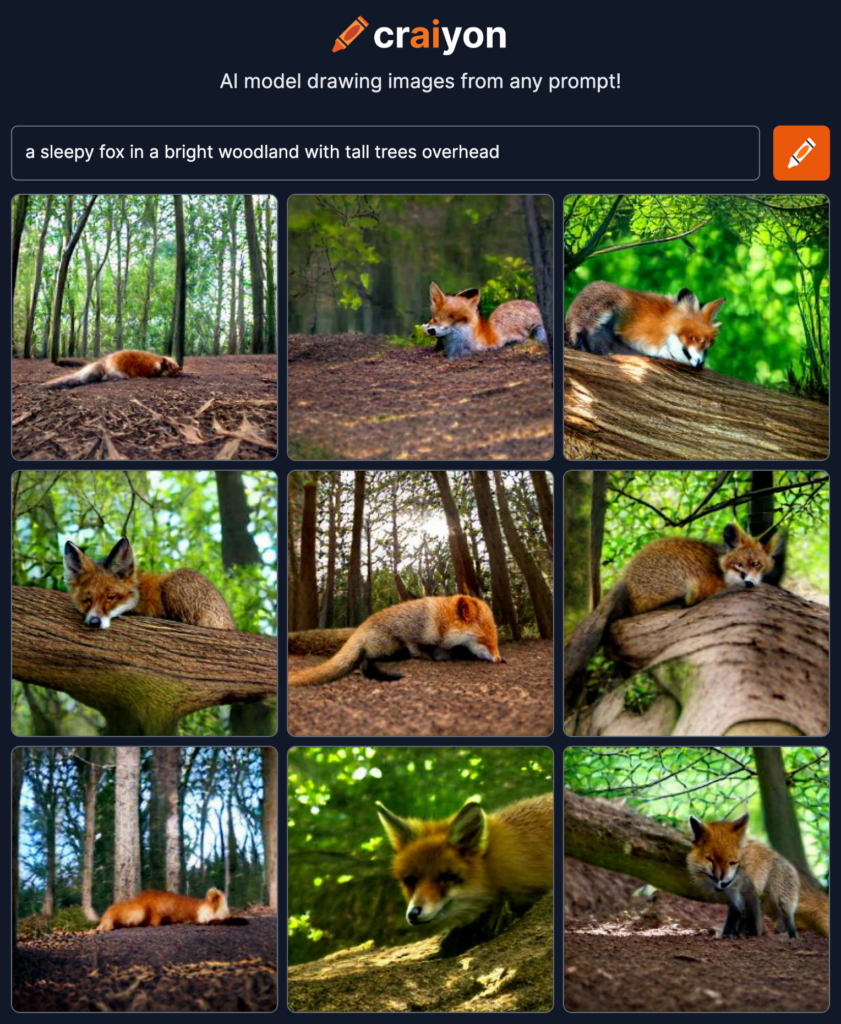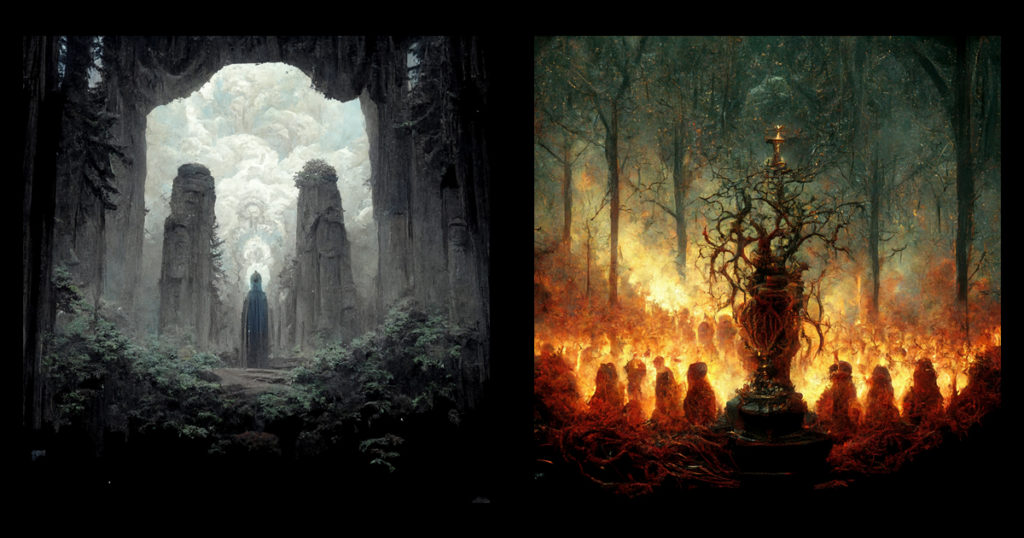How to use AI Art to build an artistic aesthetic and brand
Having trouble finding an artist to design your next album cover? Here’s how you can sit back and let your computer do the work for you…
by Gideon Waxman from SoundFly
If you’re looking for some amazing and original artwork for your next project, an Artificial Intelligence app can be a powerful new tool for creating stunning visuals. AI art is created by algorithms that mimic the way humans create art. This means that AI art can be very realistic, and the possibilities are endless.
AI art can be used for simply finding new ideas and inspiration, or it can be used to design complete album covers or build a complete aesthetic for your brand. Using AI art can help create a visually captivating experience that will make your project stand out.
If you’re looking for an exciting way to create new visuals and want to explore AI art, this article will share everything you need to know, and why it’s worth considering for your next project. Let’s dive in!
What Is AI Art?
I know what you’re probably all thinking… “Art produced by AI? What a load of junk.”
But just bear with me.
AI art is artwork that is created by a machine learning algorithm. The algorithm is taught how to create art by analyzing millions of examples of “real world” art, and it generates images based on textual descriptions. This means you can ask the tool to generate whatever image you like, and the results are actually kind of impressive.
I downloaded an AI art tool called Midjourney, which has a live Beta and has been growing in popularity. It’s run through Discord, where you input the textual descriptions, and it generates outputs based on the descriptive input provided. There are other AI art tools available, such as Crayion, DALL-E, and JasperAI.
It starts by providing four very basic designs. You can then choose whether you want it to develop a single idea further, request four new ideas altogether, or generate new ideas in a similar style based on one of the particular outputs.
Here are some examples from the “community showcase” section of Midjourney. Just a note: the more detailed a prompt is, the better quality of the outputs will be.

- Image 1 Prompt: “bold colors, digital painting of stunning woman with big blue butterfly wings on her back, wearing ornate…”
- Image 2 Prompt: “fantasy house on mountain cliff, Simon Stalenhag, intricate detail, concept art, octane render, 8k…”
- Image 3 Prompt: “A cute and adorable baby white fox with a big fluffy tail, holding a pink flower lay on a cloud in paradise, big eyes…”
See below a quick generation I made using Craiyon with the prompt: “A sleepy fox in a bright woodland with tall trees overhead.”

How AI Can Build a Strong Aesthetic for Your Musical Brand
If you have fascinating ideas you are passionate about and want to bring to life; then the AI tool can deliver just that. The key here is that AI art can actually expand human creativity.
I’d best describe the power of AI as a Formula One race car. It’s incredibly powerful and fast, but it requires a skilled driver to guide and direct it. It also needs clear and purposeful direction. It has the power to create any artistic style. From renaissance-style paintings to modern synthetic digital 8k renders, it can do it all.
But, most crucially, it allows for unrestrained freedom of creativity with your artistic brand and visual direction.
1. Hone In on Specific Ideas and Find New Ones
If you are seeking inspiration, AI can help you focus on and hone in on specific ideas by outputting a variety of unique concepts based on your prompts, within minutes.
It can assist you with creating a mood board — a selection of images representing the mood or feeling you want to create with your artwork. A mood board offers wonderful visual stimuli to clarify your vision. And within the AI community, you can find lots of incredible art pieces that might invoke new creative ideas or offer some imaginative new perspectives.
2. Explore Endless Possibilities
You can experiment with an unlimited number of artistic or photographic styles to paint whatever picture you like. You can even try blending completely polarizing styles to create highly unique pieces.
When you have found success with specific prompts, you can experiment with even more ideas and styles, for example, adding in “in the style of artist X” the tool can even try to mimic ideas based off of your favorite artists or art pieces.
3. Ultimate Flexibility and Freedom
The quality of the art I was able to generate is pretty astonishing. From my experience on Midjourney, I was able to create some intricate and highly-detailed art pieces.
I think it would be quite hard to tell whether a max-rendered piece of art generated with an AI was made by a real human or not. In fact, an AI-designed art piece recently won first place in an art competition amongst a host of real artists.

Complex illustrated art pieces can take dozens of hours. But AI can produce remarkable designs in a matter of minutes, giving you plenty of options and flexibility when it comes to designing visuals.
Especially for DIY musicians (like myself) operating on a smaller budget, the addition of AI can prove to be an incredible tool, saving you time and money and allowing you to invest more of this money into your recording gear and studio setup.
Some Downsides of AI Tools
Now, it wouldn’t be fair to offer an educational analysis on AI art without explaining some of the pitfalls of AI tools, and these are things you should consider beforehand.
1. Questionable Copyright Laws
While copyright law is still catching up with AI art, it is important to understand the implications of using it. Copyright can is a bit of a grey area. AI art is created by algorithms, and often these algorithms are based on code that is open source. This means that anyone has the ability to use and modify the code to create their own AI art.
However, if you create art with AI, you do own the asset. Midjourney states: “you own all Assets you create with the Services.” However, Midjourney is an open community used with open source code. So there is no stopping anyone from creating very similar pieces using the same textual prompt.
Despite this, however, Midjourney states in their terms of service that by creating art through their platform and AI technology, you essentially give them permission to use your art if they ever so choose.
2. A Debate on the Ethics
Is it really fair on real artists? Some people argue that AI art should not be considered art at all, because it is created by algorithms.
Well, it’s important to remember that AI art is never going to replace traditional art. There will always be a demand for traditional art, and I do believe that real-life artists (with enough time and focus) will always trump AI tools. Whether or not AI art is considered “real” art is up for debate.
That said, AI art is definitely here to stay and will only become more popular in the future.
In a previous article, I explored whether or not robots (in the forms of beat-making software, electronic drums, and virtual instruments) would ever replace real drummers. The consensus was a resounding no. Modern drummers have learned to adapt and are now incorporating electronic drums within their drum kit setups. And many drummers like myself use virtual drums to write new parts, as it’s a much more streamlined process than recording a full drum set for the sake of demos.
In conclusion
AI can be an incredible tool for bringing on inspiration and ideas. AI art brings to life whatever your mind can conjure, and it’s great for generating aesthetic mood boards and getting the right “vibe” for the musical picture you’re trying to paint.
It’s quite scary how far artificial intelligence has developed and will continue to progress. And the question on everyone’s lips remains: “Will AI music be next?!” Probably. I’m inclined to say it will exist to some degree, but only time will tell.